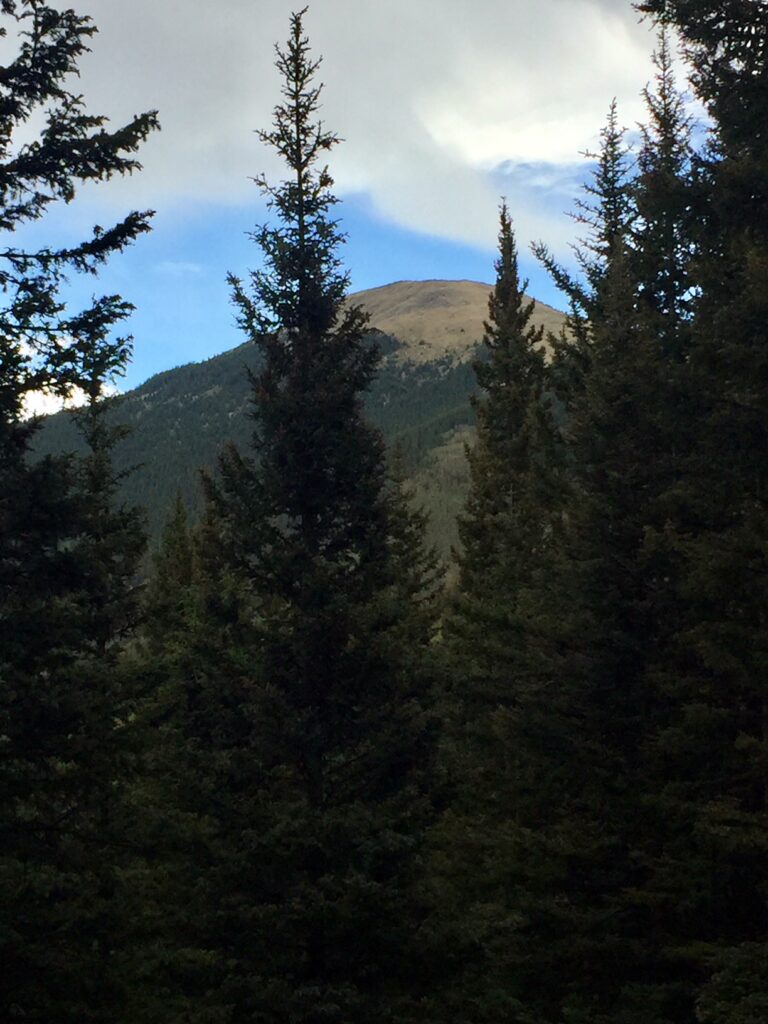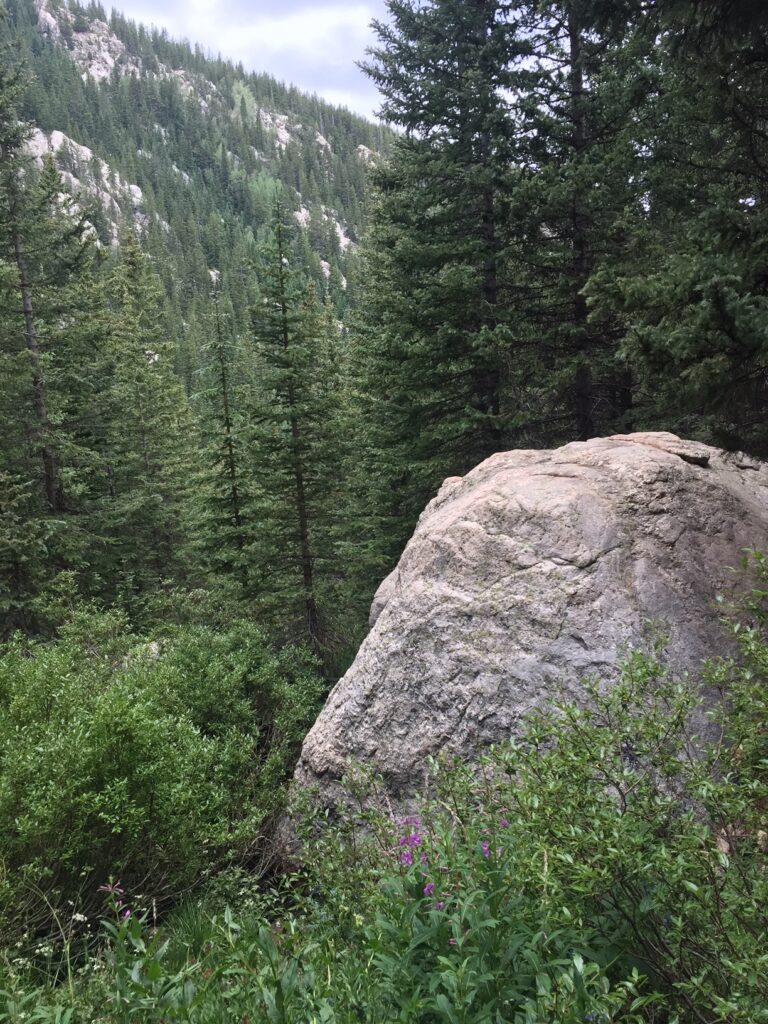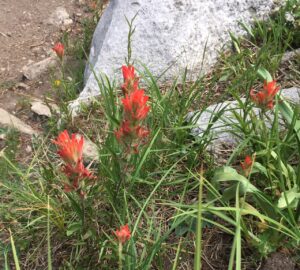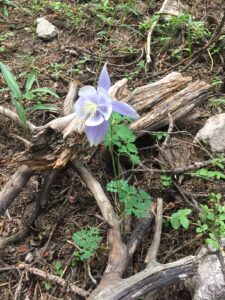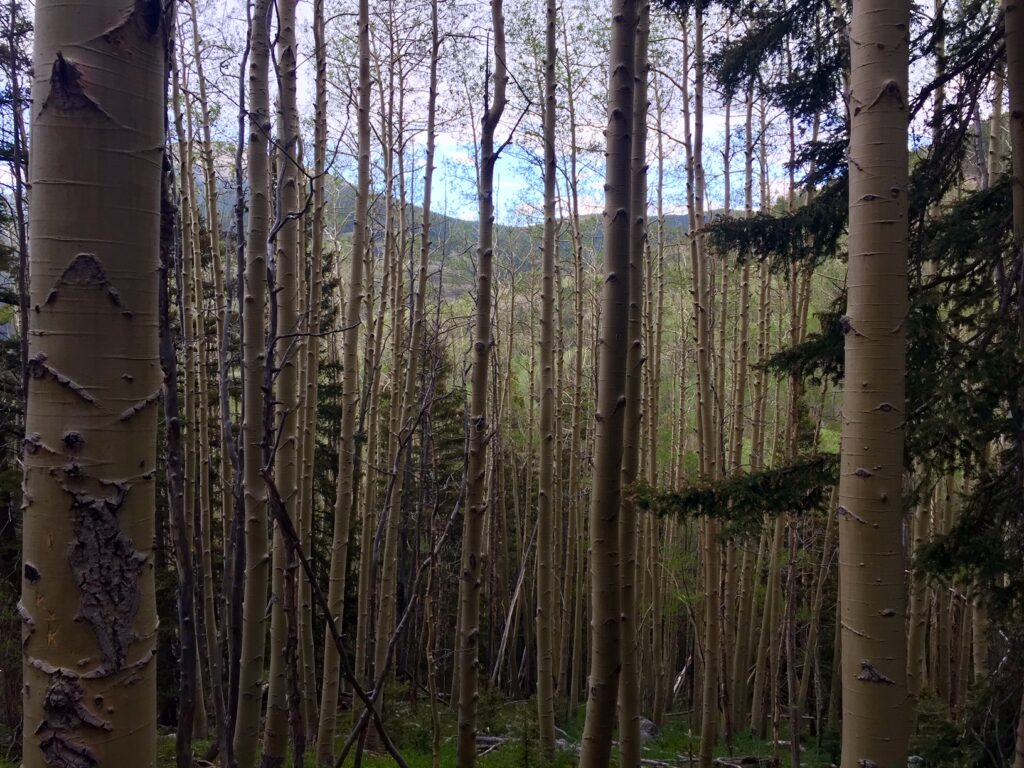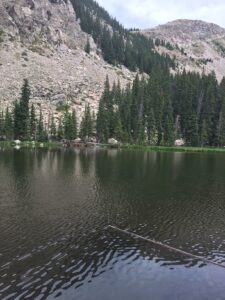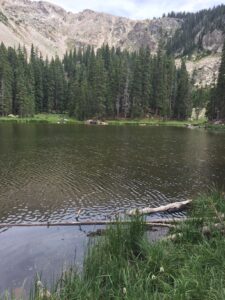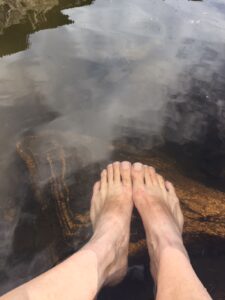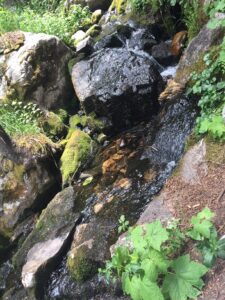my mistake
First, I thought they were hummingbirds. Barrel-shaped bodies flitted among yellow-dusted blossoms hanging under lacy leaves. From my desk at the window, I watched them swoop on buzzing wings through the slender locust tree growing between the sidewalk and street. I imagined hanging a red nectar-filled feeder by my back door. But it’s all adobe, my back wall; there’s nothing to hang a feeder on. And they weren’t hummingbirds.
Then I thought they were cicadas. I saw one that was a coppery-brown, another darker, and since I have only known cicadas by their heat-gnawing summer song and husks of abandoned skins left clawed into tree trunks and branches, I guessed they might fly in looping arcs if given the chance.
However, it appears they are a type of huge bee, built like a bumble bee but without the bad temper of that chubby garden tyrant. Carpenter bees, who chew a perfectly circular hole into any unpainted, untreated wood to make a nest. I read that the males can be aggressive when protecting the nests; yet even if they dive-bomb, they’ve got no stinger, so what do they do? Head butt? Body slam? The females have the stingers, but it seems they rarely use them. Females prefer to stay in their wood tunnel burrows. You have to provoke a female carpenter bee to get stung.
I keep encountering how much I don’t know. Like the last time I went running at the volcanoes. I saw a very looonnngg baby rattler stretched halfway into the trail, which, upon second look, I thought probably wasn’t actually a baby rattler. This snake’s head was shaped differently, and the body seemed to shine with a coppery stripe, though toward sunset, who can know what they’re really seeing. The thing is, this snake looked fast. I can’t explain this to you, except that upon seeing this very looonnngg baby rattler, entirely unmoving, unblinking, I just knew. This makes no sense, I realize, and I’m with you in being annoyed that I would state as fact what I clearly don’t know.
But life is like that.
Striped whipsnake. Belonging to the snake family of “racers,” colubridae, they’re incredibly fast: fast as a whip. They typically grow to four feet long, hence their nickname “coachwhip” (think stagecoach). Whipsnakes are often found draped in bushes like tiny anacondas, or heads-up on the ground, their faces little periscopes above the cactus as they glide across the desert sand, searching for something to eat.
Whipsnakes are generally nonvenomous. Also not constrictors. They are typically harmless to humans, though a bite still wouldn’t feel good. Nevertheless, their prey includes lizards, frogs and toads, ground-nesting birds and small mammals, even other snakes – including rattlesnakes. So how do they attack? They just rush their prey and eat it ALIVE. They. Eat. Rattlesnakes. Alive.
Appearances can be deceiving.
I remembered the carpenter bee and the whipsnake as I drove out of Albuquerque this weekend to escape daily temperatures of 105 degrees. I am not native fauna. A Colorado transplant, I realized the enormity of my error last summer; now, as July has unfortunately arrived again, I have forsaken my cool, dark cave of lethargic exhaustion in an attempt to escape. I am a mountain ground squirrel running frantically up the highway, hoping to find my habitat before my feet melt into the black pavement or I am crushed by the stampede of traffic behind me.
Against my usual prerogatives, I’m heading to Santa Fe. My hiking guidebook tells me I will find Nambé Lake at 12,000 feet. My flushed face and sweating body tell me I will find cool air and cold water within the high cirque holding this precious source of the Rio Nambé.
My bias against Santa Fe stems from its faux-adobe-suburban vibe, a city of seemingly over-educated, overly-thin white people who epitomize one stereotype of Santa Fe, salt-and-pepper haired arts patrons dressed in quick-dry shorts and web-strapped sandals, sunhats and sleeveless T-shirts baring old, brown arms, silver rings on several fingers.
People who look uncomfortably similar to me. I notice my hiking wear with dismay, driving in my Tevas with their red-patterned straps. My rings flash atop the steering wheel.
I haven’t explored much up around Santa Fe. I’ve been to Chimayo and Española, Taos and the Rio Grande River Gorge. I stayed at Upaya Zen Center for a weekend. I’ve driven up and over the High Road multiple times. But of Santa Fe itself, I only know the plaza. I only know the roads that leave Santa Fe. I haven’t actually tried to enter and explore the mountains that hold this city.
As its name suggests, Paseo de Peralta lifts you up into the hills. This road winds until it reaches another, and another, until you find yourself on Hyde Park Road. I associate Hyde Park with rich people back East, and as I drive past custom fauxdobe homes, my heart simultaneously sinks and rises with the road.
These hillside homes are, in fact, beautiful. The walls act as mere frames for windows that showcase the surrounding views, vistas that stretch and relax for miles and miles of high chaparral and wide sky. Hyde Park Road, and Gonzales Road that led up to it, cling to the edges and pinnacles of ridges, one of my favorite features of New Mexico roadways. The air is already ten degrees cooler. I drive past several neighborhoods of condos and realize I’m scouting locations for my life, smiling at the northern New Mexico Territorial architectural style with which I have always been taken, stucco and protruding vigas and shady porticos and little walled plazas for yards, sprouting sage and wildflowers. I like it up here.
You drive to the end of Hyde Park Road to get to the trailhead. I pass Hyde Memorial State Park, 350 acres donated by a member of the Hyde family in 1938, New Mexico’s first state park. “Hyde Park Road” takes on a different tone, after that.
The road wraps the mountains, curving its way up and up, through tight canyons and into taller forests. Guardrails along sheer drops feel familiar. Mount Baldy to my left reminds me that New Mexico does have peaks that rise above treeline. The sight of its smooth pate refreshes my eyes and gives me hope for this hike.
I arrive at the end of the road, a large parking lot for the Santa Fe Ski Area, and find a small gap along the side to park. I can see the trailhead sign from my car – as well as dozens and dozens of cars and hikers and lounging RVers and young Instagrammers in stretchy “athleisure.” The place is swollen with hot, sweaty humanity. But I don’t care.
Because I have reached 10,000 feet above sea level. And even though the trail begins with a precipitous rise that finds me huffing and puffing, I am totally at ease being this out of shape, this high in the world. Ten thousand feet never felt so good. My legs strain against gravity and against a summer so hot it has left me sedentary and depressed until now.
As soon as I reach the initial point of exhaustion, stopping at a switchback, feeling my blood and breath pulsing hard, my familiar comrades join me: the butterflies.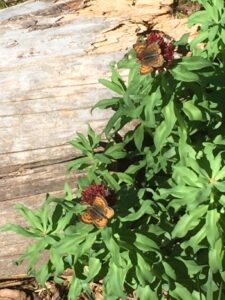

A speckled pair of bright orange, summertime energy swirl around each other and soon around me, one alighting briefly on the top of my walking stick, the other on the knot of the extra shirt tied around my waist. I feel energized with delight and relief to meet up with them, my trail guides of longstanding mutual agreement.
As quickly as they greet me, they lift and spiral away over the wildflowers. And just as easily, my temporary exhaustion is alleviated by joy. As I squeeze through the V-stile log gate into the Pecos Wilderness, I feel that my butterfly friends have welcomed me home. I follow their lead, wandering off on side loops, retracing my way back, crisscrossing the drainage, stopping to admire the paintbrush and columbine.
Even as I take yet another water break, for the entire six hours I am on the trail, I never once think this hike is a mistake.
Listening to the running stream and birdsong, I do think I might have been wrong about Santa Fe, though.
